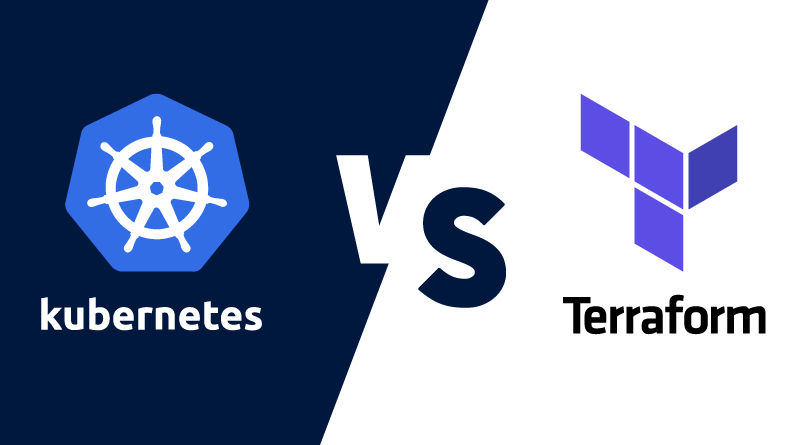DevOps makes the web development and applications development tasks easier for software developers. However, building the same is not an easy task without reliable tools or software. Kubernetes and Terraform are two major software tools that automate the coding and application deployment. Also, they work in IaC (Infrastructure as Code) environment.
Automation of software development eliminates human risk and enhances transparency. The development cycle of software is easy to automate with these automation tools. Only the automation part is the thing that makes them similar, but plenty of differences are there that distinguishes them.
In this article we will have a debate between Kubernetes vs Terraform.
A Brief Explanation
Terraform
To manage the safe and efficient infrastructure configuration of software, it gives a good automation feature. That is why Terraform is functional in any environment. Also, IT professionals scale, modify and make changes in cloud environments according to business requirements.
With Terraform, an IT team that works on the cloud infrastructure their productivity will increase. It is because this tool has a code sharing feature which ultimately expands Terraform’s functionality.
The US based HarshiCorp software company has developed this software to enable developers to work on the cloud computing infrastructure.
Related: Docker vs Kubernetes – Understand the Difference
Kubernetes
Rancher Labs and Google developed this open-source software to manage multiple containers. With this tool, developers automate their software deployment across multiple environments. Self-recovery, load balancing and the auto-scaling are some of the Kubernetes features. Thus, developers easily scale applications with the command-based scaling option.
Pros and Cons: Kubernetes vs Terraform
Pros of Terraform
- Multiple resources can be used for multi-cloud deployments
- Prevents downtime
- Enhances the recording, tracking, management, and reporting of changes
- Syntax with declarative clauses
- Documentation that is comprehensive and easily readable
Check Fully Managed Cloud Hosting Plans by MilesWeb for Business Success!
Cons of Terraform
- The GKE (Google Kubernetes Engine) isn’t fully supported.
- Can’t handle errors.
- Rolling back feature is missing in this software. If you want to do the same, delete the entire managed object in coding.
- New releases come with bugs.
Pros of Kubernetes
- Perform the horizontal scaling of infrastructure. It means you can add nodes as per your capacity.
- There are no infrastructural lock-ins.
- Syntax with declarative clauses
- Ensures that replicas are always healthy and automates healing
- Container management tool backed by Google with extensive documentation
Cons of Kubernetes
- Mastering this software is not easy for beginners.
- Organizations need to adjust their workflows according to the K8s.
- Only cloud infrastructure orchestration is possible.
Related: Jenkins vs Kubernetes: Decoding Their Features
What makes them different? Kubernetes vs Terraform
In many blogs, you might have read about similarities between these two modern technologies. However, they both are different from each other. Read the difference section below.
1. Ease to use
Kubernetes’ workflow is a bit challenging to use because users require plenty of technical knowledge. The understanding of internal components and cluster mechanics are essential before accessing Kubernetes. On the other hand, terraform has an easy-to-interface for new users which makes the software easy to use.
2. Focus Area
Both these tools Kubernetes and Terraform solve different problems and thus, their fundamental functions are different. Terraform emphasizes on Iac environment and provision infrastructure for the same. But Kubernetes only manages containers and their workload.
3. Configuration Language
Hashicorp Configuration Language (or HCL) is used by Terraform to define declarative objects. By using an HCL file, you can create resources that run on multiple cloud platforms.
YAML and JSON files define declarative objects in Kubernetes. Kubernetes objects are managed through these files. When writing configuration files, YAML is preferable to JSON, but the two can be used interchangeably.
Final Words
Among the most popular modern DevOps tools, Terraform and Kubernetes differ significantly. In our research, we analyzed each tool’s strengths and weaknesses for developers and IT operators. With Terraform, resources can be declaratively managed across a wide range of cloud platforms. With Kubernetes, you can manage your container environments’ resources, deploy them, and manage load balancing.







